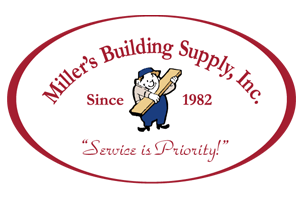
How To Beat The Heat On The Jobsite
When working in the heat, the risk for injury increases, so keeping yourself and your crew as safe as possible is crucial during the hot summer months.
Working conditions depend on more than just the temperature. The air temperature, the humidity levels, radiant heat from sunlight or heat sources like furnaces, and whether there is wind or air movement all factor into how much heat takes a toll on you.
When it’s extremely hot, your body has to work even harder to keep you at a normal temperature. There are ways to stay safe and prepared on the job site as temperatures rise.
BE AWARE OF THE HEAT AND HUMIDITY
Be aware of local weather conditions by checking the National Weather Service’s website or local news for information about the heat and humidity. It’s important to know if there’s a heat advisory, what the heat index is, and if there’s an excessive heat warning.
To stay safe, follow the Occupational Safety and Health Administration’s (OSHA) recommendations on what workload and environment is suitable depending on environmental conditions.
EASE INTO WORKING
If an employee has taken time off, the sun will impact them even more than usual. New contractors also won’t be as acclimated to working in sunny outdoor conditions. Allow for more frequent breaks for these employees and gradually increase their workload.
OSHA recommends that on someone’s first day of work or first day returning, have them work no more than 20% of their shift at full intensity in the heat. Then, slowly increase the work intensity until they’re used to working in the heat.
TAKE BREAKS
Taking breaks is vital when working in hot conditions so the body can cool down. Make sure your crew takes breaks in an area that has shade or air conditioning. Also, check that everyone is using this time to drink water.
Keep in mind that having a rest schedule doesn’t eliminate the risk of heat illness for your employees during extreme heat. They should monitor one another closely on the job site to keep situations from escalating.
KNOW THE SIGNS OF HEAT-RELATED ILLNESSES
Teach your contractors how to watch for signs of heat illnesses in themselves and one another. Exposure to heat can be dangerous and lead to heat-related illnesses like heat cramps and heat exhaustion.
Signs that there’s an emergency include if someone has abnormal thinking or behavior, slurred speech, seizures, or loss of consciousness. Teach your crew when to call 911, get the person cooled down immediately and stay by their side until help is there. Other signs of heat illness include headaches, nausea, weakness, dizziness, and elevated body temperature.
EAT LIGHT
Along with drinking water, there are foods that can help you feel refreshed and hydrated. Fruits and vegetables with high water content like watermelon, berries, cucumbers, and spinach are great to snack on.
Avoid foods that take more work for your body to digest like fried foods or dark meat. Eating a lot of heavy foods can make the heat more unbearable since you’ll feel sluggish.
HYDRATE
Staying hydrated helps you avoid heat-related illnesses. Make sure you drink one cup (8 oz.) of water every 15 minutes. Don’t wait until you feel thirsty to drink water. Water is always the best thing to drink, but since you lose water and electrolytes by sweating, sports drinks with balanced electrolytes are an okay alternative.
PROTECT YOURSELF FROM THE SUN
Even on cloudy days, broad-spectrum sunscreen is your new best friend. Use a waterproof or water-resistant sunscreen so you get the benefits of sunscreen even when sweating. Make sure you reapply often.
When working outside, wear lightweight, light-colored clothing that fits loosely as well as hats and sunglasses when possible. Wearing long-sleeved clothing can provide some protection from the sun. Of course, wearing safety gear like work boots and required personal protective equipment is still the top priority.
ADJUST YOUR SCHEDULE
If you’re the overseer of the job site, adjust schedules to avoid working during the hottest part of the day. The earlier you can get to work, the better. Ultraviolet (UV) rays are most intense between 10 a.m. and 4 p.m.
GET ENOUGH SLEEP
Getting enough sleep is never a bad thing. Working in the blazing heat while drowsy is no fun.
Getting a good night's sleep isn’t a way to avoid heat illnesses, but to help keep yourself safe, alert, and ready for a big day. Try to get seven hours of quality sleep or more a night when possible.
STAY SAFE BY USING QUALITY MATERIALS
Using quality materials is important at any time of year and in any climate. From our lumber yard to our drywall, building materials, and steel framing departments, you can get what you need at Miller’s Building Supply.
Once you receive our quality products and experience our great customer service, you’ll see why so many builders and remodelers come to Miller’s.
Check out our products online or visit us at 1819 E. Monroe St. in Goshen.

